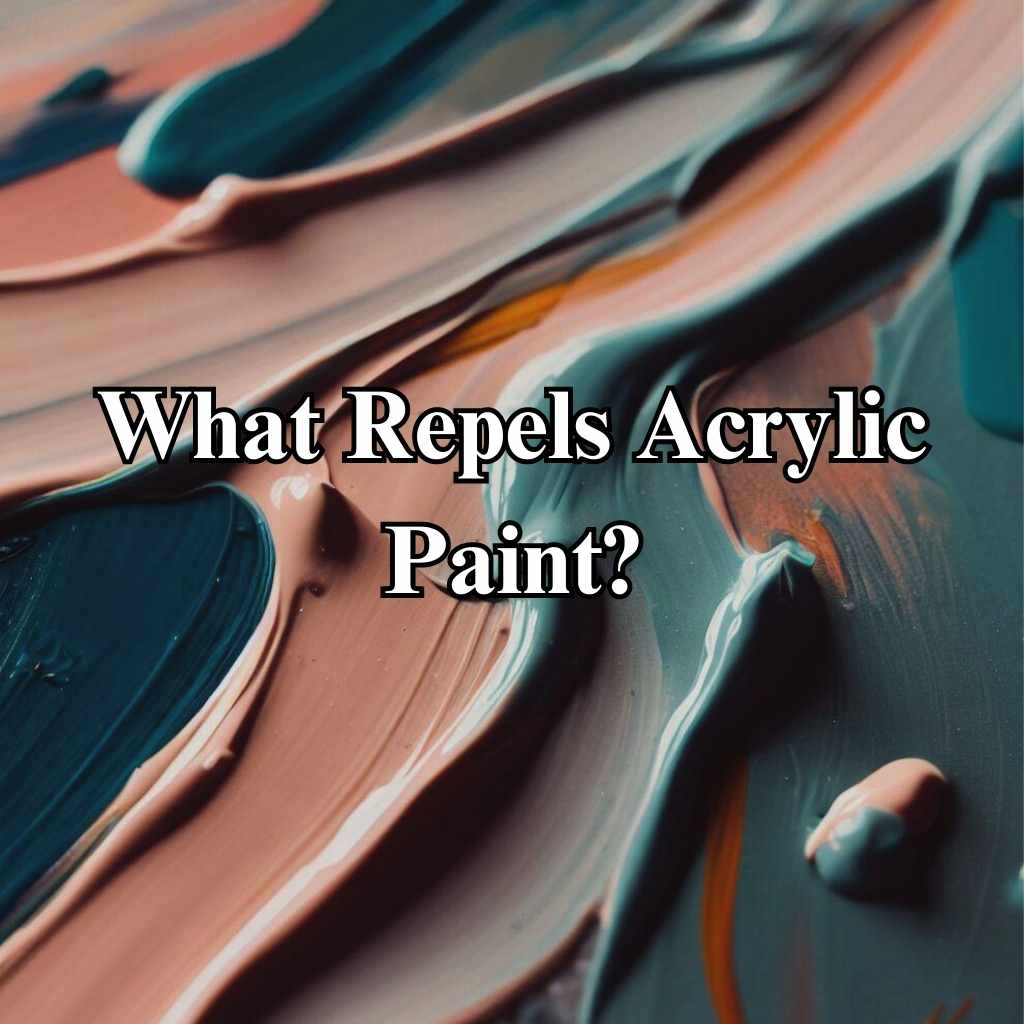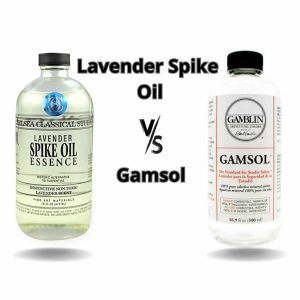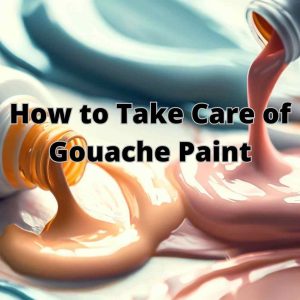Are you an artist or DIY enthusiast who loves working with acrylic paint? You meticulously plan your projects, gather your supplies, and pour your creativity onto the canvas, only to be disappointed by the paint’s behavior.
It’s frustrating when you encounter unexpected obstacles that hinder the adhesion and smooth application of your beloved acrylic paint or maybe you want to repel acrylic paint in some areas of your artwork. But fear not!
In this comprehensive introduction, we will dive deep into the realm of what repels acrylic paint and equip you with the knowledge to overcome these challenges.
Whether you’re struggling with paint beading up, sliding off, or not adhering uniformly, understanding the properties, factors, and techniques that affect paint repellency is the first step towards achieving breathtaking results in your artwork.
Get ready to unravel the mysteries and unlock the solutions that will elevate your acrylic painting journey to new heights!
Factors Influencing Acrylic Paint Repellency
When it comes to the art of acrylic painting, achieving the desired results can be a delicate dance between the brush and the canvas. Yet, there are times when the paint seems to resist your every stroke, leaving you puzzled and frustrated.
Understanding the factors influencing acrylic paint repellency is the key to unraveling this mystery and reclaiming control over your artistic process-
- Surface Texture and Porosity
The texture and porosity of the surface play a significant role in the adhesion of acrylic paint. Smooth surfaces provide less mechanical grip for the paint, making it prone to peeling or sliding off.


Conversely, rough surfaces offer more opportunities for the paint to adhere effectively, as the texture provides more surface area for the paint to grip onto. Porous surfaces, such as untreated wood or unprimed canvas, have the tendency to absorb the paint, leading to poor adhesion.
- Chemical Composition of Surfaces
Certain materials possess a non-porous nature, which resists the penetration of acrylic paint. Plastics, glass, and metals are examples of non-porous surfaces that can repel acrylic paint due to their smooth and resistant characteristics.
Additionally, common household materials, such as silicone, Teflon, and certain types of laminates, create a barrier that prevents the paint from adhering properly.
What Repel Acrylic Paint: Materials and Substances
As you delve deeper into the world of acrylic painting, it’s important to be aware of the materials and substances that can repel acrylic paint. Understanding these substances will allow you to make informed choices and avoid potential pitfalls in your artistic endeavors-
Oil-Based Substances
Oil-based substances create a repelling effect on acrylic paint due to the fundamental differences in their chemical compositions.
Acrylic paint is water-based, while oil-based substances, such as oils, grease, and some petroleum-based products, do not mix well with water. The presence of oil on a surface hinders the adhesion of acrylic paint, causing it to bead up or slide off.
Wax-Based Products
Wax acts as a barrier against acrylic paint adhesion. When applied to a surface, the wax creates a protective layer that prevents the paint from bonding effectively.
Various wax-based materials, such as wax candles, wax finishes, and even wax-based furniture polishes, can repel acrylic paint.
Silicone-Based Products
Silicone plays a significant role in preventing paint from sticking to surfaces. It is widely used in products such as silicone sprays, lubricants, and certain types of caulk. The slippery nature of silicone creates a repelling effect on acrylic paint, making it challenging for the paint to adhere properly.
Chemicals and Solvents that Repel Acrylic Paint
Certain chemicals and solvents can have a repelling effect on acrylic paint. Cleaning agents that contain strong chemicals or solvents, such as acetone or mineral spirits, can interfere with the adhesion of the paint.
When a surface is not adequately cleaned after using these agents, residual traces can repel acrylic paint and prevent it from bonding effectively. You can also use these products to repel acrylic paint in some areas of your painting.
It is crucial to identify and avoid surfaces that have been treated with chemical-laden products before applying acrylic paint. Mild, non-solvent-based cleaning agents are generally preferred to avoid any repelling effects on the paint.
If you have to remove any dirt, water-based cleaners or gentle soap solutions are often suitable for removing dirt, grease, or other contaminants without repelling the paint.
UV Radiation and Its Effect on Acrylic Paint
UV radiation, primarily from sunlight, can cause acrylic paint to degrade over time. Prolonged exposure to UV rays can lead to fading, discoloration, or even paint film breakdown. While UV radiation itself does not repel acrylic paint, the resulting damage can make the paint less durable and prone to failure.
If you want your painting to have some faded effect, you can keep your painting under the sun for a certain amount of time before varnishing.
To protect against UV-induced paint damage, it is essential to use paints with UV-resistant properties or apply a suitable protective coating over the painted surface. Excessive thinning of acrylic paint, particularly with water or mediums, can make the paint film more vulnerable to UV-induced damage.
Protective Coatings and Finishes
When it comes to preserving and enhancing your acrylic artwork, protective coatings and finishes play a crucial role.
These coatings not only provide a layer of protection but also offer unique properties that can affect the adhesion and longevity of the paint-
- Clear Sealants and Varnishes: Clear sealants and varnishes are commonly used to create a protective layer over acrylic paintings. These coatings act as a shield against external elements, such as dust, moisture, and UV rays.
Clear sealants and varnishes come in various formulations, including glossy, matte, and satin finishes, allowing you to choose the desired aesthetic for your artwork. They also provide added durability and ease of cleaning.
- Wax Finishes and Polishes: Another type of protective coating is wax finishes and polishes. Wax not only adds a protective layer but also imparts a lustrous and glossy look to your acrylic paintings.
Wax finishes can be buffed to achieve a smooth and polished surface, enhancing the visual appeal of your artwork.
- Silicone Coatings: Silicone coatings can be used to protect acrylic paintings. Silicone-based coatings provide a barrier that repels dust and debris, ensuring that your artwork remains clean and vibrant.
These coatings are particularly useful for mixed-media artworks or paintings with intricate textures.
Preparing Surfaces to Enhance Acrylic Paint Adhesion
To achieve optimal adhesion and flawless results in your acrylic painting endeavors, preparing surfaces is a crucial step that should never be overlooked. Proper surface preparation sets the foundation for successful paint application and ensures long-lasting adhesion-
Surface Cleaning and Preparation
Proper surface cleaning and preparation are crucial for ensuring optimal paint adhesion. Dust, dirt, and grease can hinder the paint from adhering effectively, resulting in poor coverage and adhesion issues.
Thoroughly clean the surface using appropriate techniques, depending on the material, to remove any contaminants that might repel the paint.
Surface Priming and Conditioning

Surface priming plays a vital role in improving paint adhesion and longevity. Primers create a preparatory layer that enhances the bonding between the surface and the paint.
Different types of primers are available for specific surfaces, such as wood, metal, and plastic. Selecting the right primer ensures better paint adhesion and minimizes the risk of repellency.
Sanding and Texturing
Sanding and texturing the surface before applying acrylic paint can significantly improve adhesion. Sanding creates a slightly roughened surface, providing more grip for the paint to adhere to.
Additionally, adding texture to the surface, either through techniques like stippling or by using textured mediums, creates more contact points for the paint, reducing the chances of repellency.
Techniques to Overcome Paint Repellency
When faced with the challenge of paint repellency, there are various techniques and approaches you can employ to overcome this obstacle and achieve the desired results in your acrylic painting-
- Surface Pre-Treatments: Using surface modifiers or pre-treatments can enhance paint adhesion and overcome repellency issues. These pre-treatments are typically chemical solutions that modify the surface’s properties, making it more receptive to acrylic paint. Some examples include surface etching solutions, bonding primers, and adhesion promoters.
- Paint Additives: Incorporating additives into acrylic paint can improve its adhesion and overcome repellency challenges. Paint additives, such as flow enhancers, adhesion promoters, and bonding agents, alter the paint’s properties, allowing it to adhere better to various surfaces. Experimenting with different additives can help overcome specific repellency issues.
- Multiple Layers and Bonding Agents: Applying multiple layers of acrylic paint can increase adhesion and overcome repellency problems. By layering the paint, you provide more opportunities for the subsequent layers to adhere to the surface.
Additionally, using bonding agents or mediums designed to enhance adhesion can further improve the bond between the paint layers and the surface.
Troubleshooting Paint Repellency Issues
There are troubleshooting techniques and solutions to help you overcome these challenges and achieve the desired results-
- Identifying Repellency Problems
To address paint repellency, it’s essential to identify the signs and symptoms indicating a lack of proper adhesion. These may include paint beading up, sliding off, or not adhering uniformly to the surface.
Artists and DIYers commonly encounter issues with paint repellency when working on challenging surfaces or when using incompatible materials.
- Solutions and Remedies
Addressing paint repellency requires employing various techniques and remedies depending on the specific problem at hand. Techniques such as sanding, priming, and using suitable additives or bonding agents can help overcome repellency issues.
Additionally, troubleshooting tips and tricks, such as adjusting paint consistency or experimenting with different surface treatments, can assist in resolving specific challenges.
- Repulsion with Alternative Paint Options
In some cases, despite your best efforts, certain surfaces may prove too challenging for acrylic paint. Exploring alternative paint formulations can help overcome these limitations.
Acrylic mediums and additives, such as gels or texture pastes, can enhance paint adhesion on difficult surfaces by increasing viscosity or providing additional gripping properties.
Alternatively, considering different paint types, such as oil-based paints or epoxy coatings, may be suitable for specific repelling factors. Experimenting with alternative paint options can open new possibilities for achieving the desired result
FAQs
- Can I use a clear sealant or varnish to prevent acrylic paint from repelling on surfaces?
Yes, clear sealants and varnishes can be applied as a protective coating to create a barrier between the surface and the paint. They can help prevent acrylic paint from repelling and enhance its adhesion. It’s important to choose a suitable sealant or varnish designed for acrylic paint and follow the manufacturer’s instructions for proper application.
- Can I use rubbing alcohol or other solvents to improve acrylic paint adhesion on certain surfaces?
Rubbing alcohol and other solvents can be used as surface pre-treatments to improve paint adhesion on certain surfaces. These solvents help remove any oils, grease, or contaminants that may hinder paint adhesion. However, it’s important to exercise caution and test the solvent on a small, inconspicuous area first to ensure it doesn’t damage the surface or affect the desired outcome.
- What should I do if I encounter paint repellency issues in the middle of an acrylic painting project?
If you encounter paint repellency issues during a painting project, stop painting immediately. Assess the situation and identify the cause of repellency, such as surface texture, contaminants, or incompatible materials. Depending on the issue, you may need to clean the surface, reapply a primer or bonding agent, or adjust your painting techniques. Take the necessary steps to address the issue before continuing with your artwork.
- Can the type of brush or tool I use affect acrylic paint repellency?
The type of brush or tool you use can indeed influence acrylic paint repellency. Brushes with stiff bristles or tools with uneven surfaces can create texture and enhance paint adhesion, while smooth and synthetic brushes may result in a smoother application but could be more prone to repellency. Experiment with different brush types and tools to find the ones that work best for your desired painting effects.
- How can I prevent acrylic paint from repelling on plastic surfaces?
Adhering acrylic paint to plastic surfaces can be challenging due to its non-porous nature. To improve adhesion, it’s important to clean the plastic surface thoroughly to remove any oils or residues. Sanding the surface lightly or using a plastic adhesion promoter can help create texture and enhance paint adhesion. Additionally, using a primer specifically designed for plastic surfaces can improve paint bonds.
Conclusion
In the world of acrylic painting, the quest for flawless results can sometimes be marred by the enigmatic question of what repels acrylic paint. You’ve poured your heart and soul into your artistic endeavors, only to encounter unexpected challenges and frustrations.
But fear not, fellow artists and DIY enthusiasts! With the knowledge and insights gained from this comprehensive journey, you are now equipped with the tools to overcome the repellency obstacles that once stood in your way.
Armed with an understanding of acrylic paint properties, the factors influencing its repellency, and the techniques to enhance adhesion, you can confidently create masterpieces that defy the limitations of what repels acrylic paint.
So, let your imagination run wild, experiment fearlessly, and unlock the full potential of acrylic paint as you embark on a creative journey filled with boundless possibilities.




